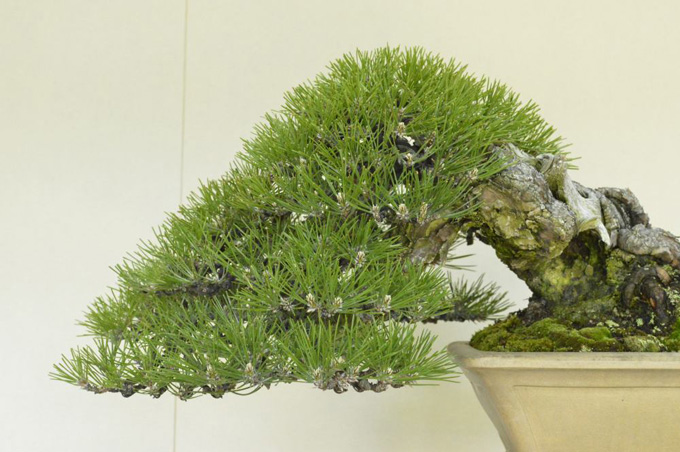 What a great photo. It helps to have such an excellent subject for sure (Japanese black pine). It’s from post titled ‘The Dark Horse’ on the Bjorvala Bonsai Studio blog. The full tree and pot are shown below.
What a great photo. It helps to have such an excellent subject for sure (Japanese black pine). It’s from post titled ‘The Dark Horse’ on the Bjorvala Bonsai Studio blog. The full tree and pot are shown below.
There’s really not much of theme going on with this post, other than a digital tour of some bonsai blogs/websites. So we’ll leave it at that… except to say that we’re going a little farther afield than we usually do.
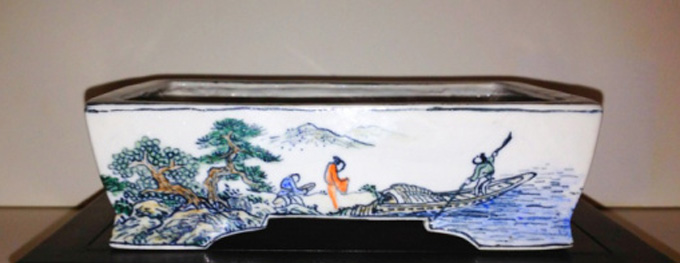 I have a soft spot for hand painted bonsai pots. This one is from the ‘for sale’ section of Ryan Bell’s Japanese Bonsai Pots Blog. Here’s the caption: “Echizen Hosui 5-color painted pot, with original Turmeric cloth stamped by artist. 5.6″ by 4″ by 1.6”. SOLD!” (too bad about the sold part). When you see just how small the pot is, the painting is that much more amazing.
I have a soft spot for hand painted bonsai pots. This one is from the ‘for sale’ section of Ryan Bell’s Japanese Bonsai Pots Blog. Here’s the caption: “Echizen Hosui 5-color painted pot, with original Turmeric cloth stamped by artist. 5.6″ by 4″ by 1.6”. SOLD!” (too bad about the sold part). When you see just how small the pot is, the painting is that much more amazing.
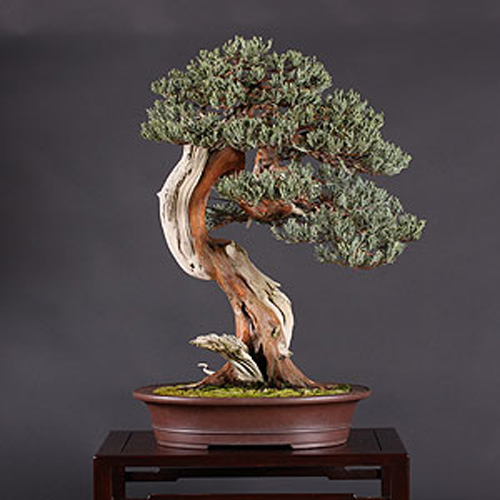 Sierra juniper by Boon. We featured one of Boon’s Sierra junipers (J. occidenatalis) on the cover of our very last issue of Bonsai Today (issue 108, back in 2007). Boon calls this one Kirin.
Sierra juniper by Boon. We featured one of Boon’s Sierra junipers (J. occidenatalis) on the cover of our very last issue of Bonsai Today (issue 108, back in 2007). Boon calls this one Kirin.
I don’t know if you are interested, but, in addition to being a Japanese beer… “The Kirin is a legendary Asian creature similar to the Western unicorn. It is said to look like a horse, with the tail of a lion and golden scales on its body. It has golden fiery manes and a head looking like a cross between horse and dragon. It has a single horn on its forehead in most depictions (courtesy of Anwers). Can you see it?
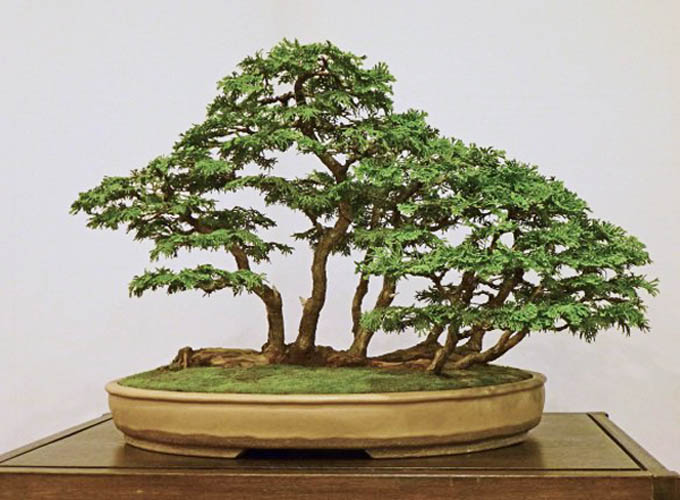 I can’t be sure if this is a Hinoki (Chamaecyparis obtusa) or an Arborvitae (Thuja, aka Cedar). There are plentiful varieties of each, and sometimes they look quite similar. If it’s a Hinoki, I don’t think I’ve ever seen one that’s raft-style. Actually, the same goes if it’s a Cedar. Whatever it is, it was one of the trees shown at the 2013 Swindon Winter Image Show (in the U.K.). I found it on the Bonsai-Passion blog.
I can’t be sure if this is a Hinoki (Chamaecyparis obtusa) or an Arborvitae (Thuja, aka Cedar). There are plentiful varieties of each, and sometimes they look quite similar. If it’s a Hinoki, I don’t think I’ve ever seen one that’s raft-style. Actually, the same goes if it’s a Cedar. Whatever it is, it was one of the trees shown at the 2013 Swindon Winter Image Show (in the U.K.). I found it on the Bonsai-Passion blog.
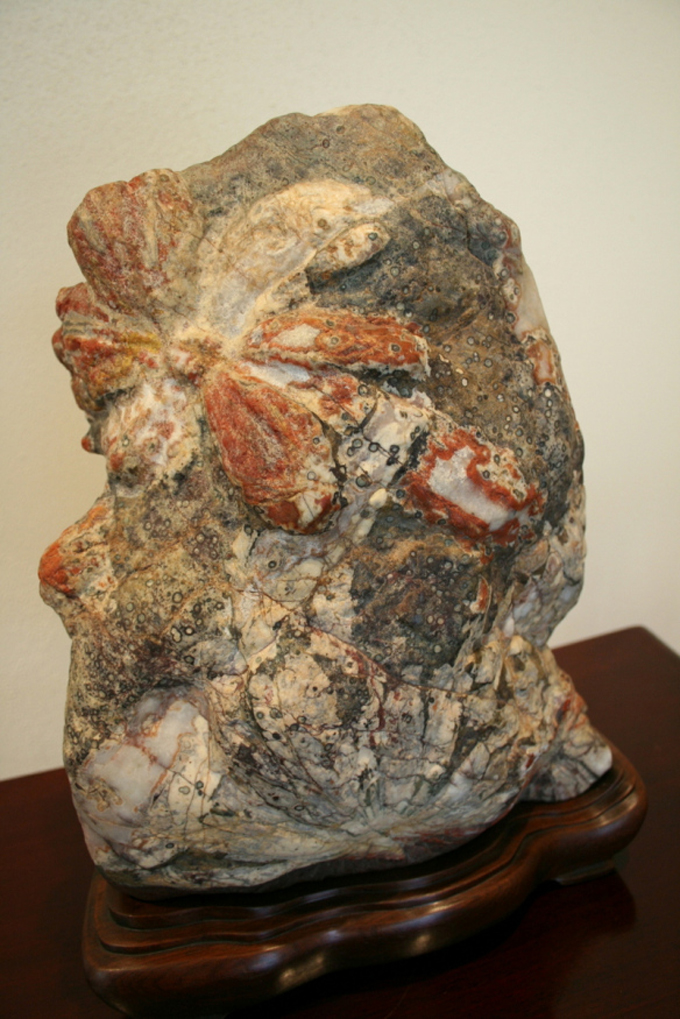 To my somewhat unsophisticated eyes, this is a truly remarkable stone. Though we almost never show Suiseki and Gongshi (Japanese and Chinese for viewing stones) on Bark, we used to feature them in Bonsai Today now and then. As you probably know, there is a bonsai tie-in with suiseki, especially when it comes to display. In fact, this one is from a fall Tokonoma display at the National Bonsai and Penjing Museum. It was featured on Capital Bonsai way back in 2012. Their caption reads: “This close-up view of the stone shows the various mineral deposits within the stones matrix.”
To my somewhat unsophisticated eyes, this is a truly remarkable stone. Though we almost never show Suiseki and Gongshi (Japanese and Chinese for viewing stones) on Bark, we used to feature them in Bonsai Today now and then. As you probably know, there is a bonsai tie-in with suiseki, especially when it comes to display. In fact, this one is from a fall Tokonoma display at the National Bonsai and Penjing Museum. It was featured on Capital Bonsai way back in 2012. Their caption reads: “This close-up view of the stone shows the various mineral deposits within the stones matrix.”
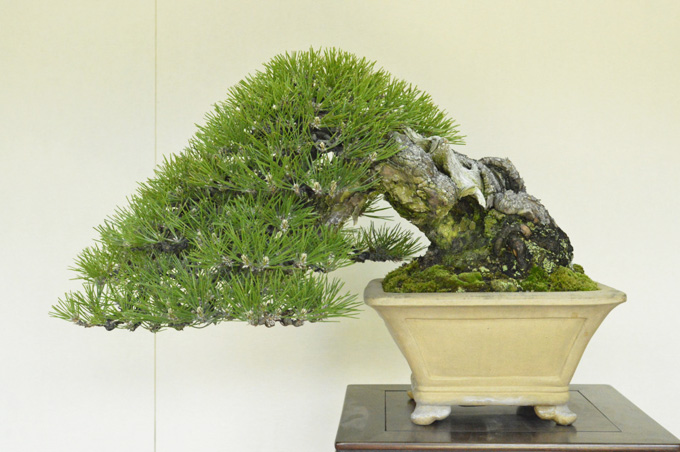 Here’s the whole Dark Horse from the top of the post.
Here’s the whole Dark Horse from the top of the post.
waaaw such a beautiful bonsai